Clueless, Downton Abbey, Bridgerton: How costume drama is reinventing itself
Advertisement
CNA Lifestyle
Clueless, Downton Abbey, Bridgerton: How costume drama is reinventing itself
This once-cosy television genre is taking risks and holding a mirror to our times, touching on topics such equally race. Is the tight corset slowly unlacing itself a scrap more?
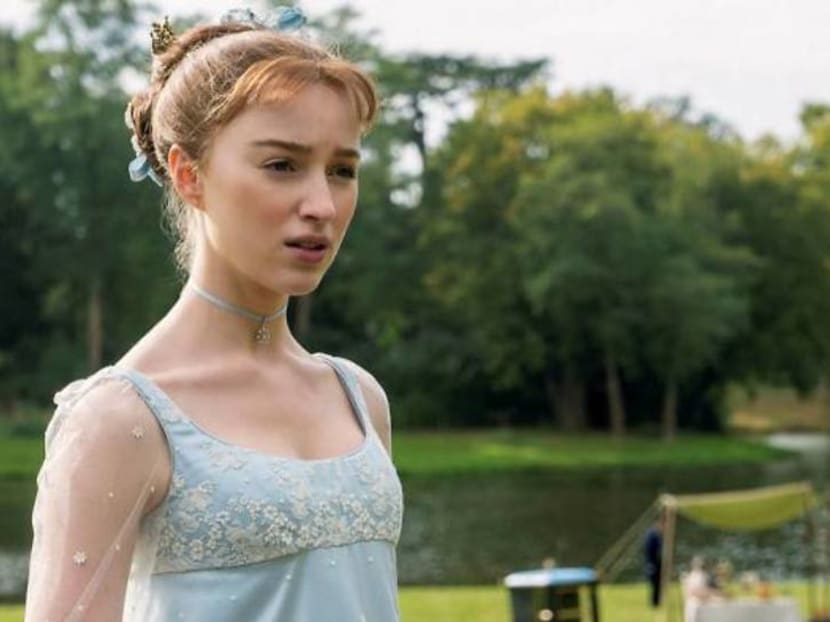
The first season of Bridgerton followed Daphne. (Photo: Netflix)
Riding her horse through a London park in 1813, Daphne Bridgerton, heroine of the Netflix serial Bridgerton, turns to her blood brother Anthony and shares her woes. Her complaint echoes the predicament that confronts many heroines of costume dramas, from Elizabeth Bennet in Jane Austen's Pride And Prejudice (published that twelvemonth) to Lady Mary Crawley in Downton Abbey.
"You take no thought what it is to be a adult female, what it might feel like to have one's entire life reduced to a unmarried moment. This is all I have been raised for. This is all I am. I take no other value. If I am unable to find a husband, I shall be worthless," Daphne tells Lord Bridgerton. She soon hatches a plot with a duke who is a friend of his – a handsome and haughty i, naturally – and the intrigue begins.
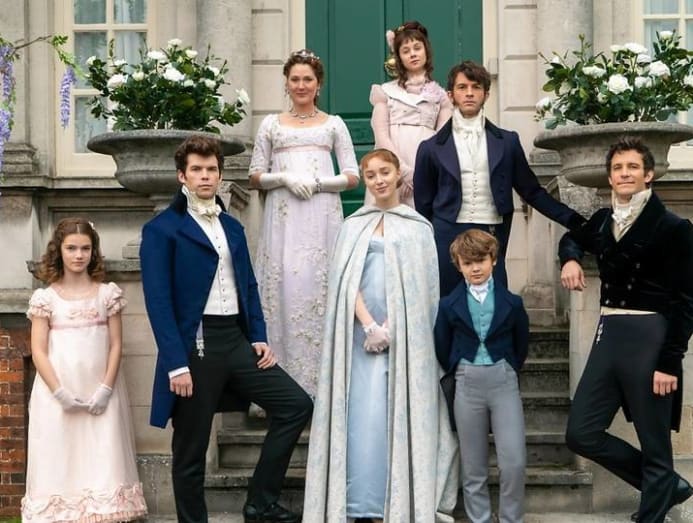
It is a narrative of union and coin, of honour and deceit, of love and strategy, of aristocracy and nouveaux riches, with handsome mansions, beautiful dresses and diamond tiaras worn with ostrich feathers.
The Bridgertons promenade under fireworks at Vauxhall Pleasure Gardens where, Hannah Greig records in her book on Georgian London The Swain Monde, "the prostitute could present herself as a peeress and the rake every bit a respectable human".
A RESILIENT ART Class
Forth with the police procedural, the high schoolhouse comedy, the action picture show and the fantasy quest, the costume drama is a resilient art form. BBC series such as its 1972 TV adaptation of Leo Tolstoy's State of war And Peace and The Pallisers, its 1974 version of Anthony Trollope's novels, set the tone for what followed. The clothes, from waistcoats and cravats to corsets and ball gowns, bespeak restraint but, as the cultural historian Joanna Scutts wrote, "the genre, like a corset, is ever threatening to unlace itself".
Bridgerton, adapted from the historical romance novels past Julia Quinn, gets unlaced straightaway, with Lord Bridgerton's first appearance having sex activity with his mistress against a convenient tree. You would not notice the latter in Jane Austen, but it has historical relevance: "I tin only call back of London as a kind of mistress; dissolute in principles, loose in exercise and extravagant in pleasure," Anne Ingram, Viscountess Irwin, wrote to her father in Yorkshire in the 1730s.
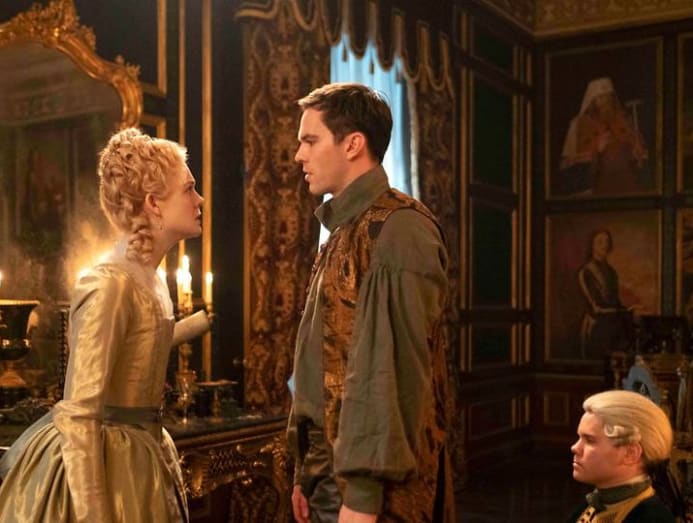
The Dandy, a comedic imitation-history of Catherine the Great of Russia created by Tony McNamara, co-author of the Oscar-nominated drama The Favourite, is unlaced in a different way. The Great, which is showing on Channel 4 in the UK later appearing on Hulu in the US terminal May, takes knowing liberties with events (it is billed every bit "an occasionally true story") and plays the Russian empire as farce. Costume drama has become capacious enough to accommodate the postmodern forth with the glossy.
FROM CLUELESS TO DAVID COPPERFIELD
It is now mutual to experiment with tone and casting, rather than sticking strictly to tradition. Since Clueless, the 1995 film that used Jane Austen's Emma as the basis for a high schoolhouse comedy, the novel has been dramatised in many different forms.
It verged on screwball one-act in Fall de Wilde'southward film version starring Anya Taylor-Joy terminal twelvemonth. Meanwhile, black actors play aristocrats in Bridgerton and Armando Iannucci bandage Dev Patel as the lead in The Personal History of David Copperfield, his deft retelling of Charles Dickens' classic novel.
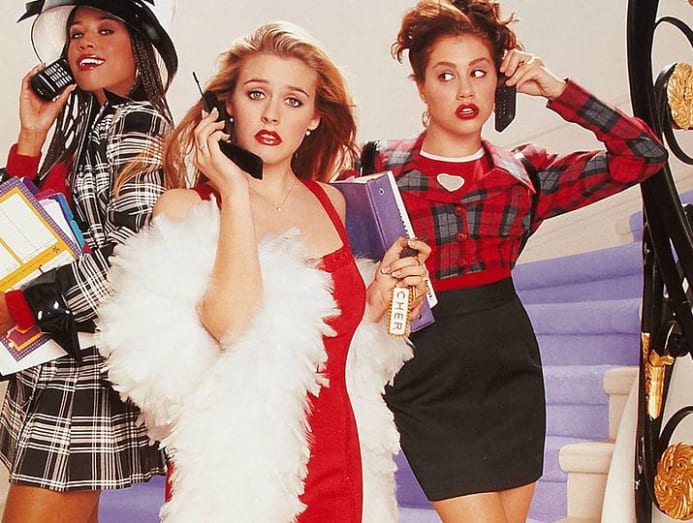
It remains hitting that Chicago-built-in Shonda Rhimes, showrunner of American network series such as Gray's Anatomy, picked Bridgerton every bit the first foray for her product group Shondaland in its U.s.a.$100m (S$133m) bargain with Netflix. Not only is it a costume drama, but one with a traditional precinct – Grosvenor Square and Buckingham Palace – rather than, say, the American ceremonious state of war in David O Selznick'southward production of Gone With The Wind (1939).
The classic explanation for the success of costume drama is that it provides calorie-free relief and psychological reassurance in tough times. Bridgerton's standing every bit Netflix'due south 5th-biggest original serial launch amid the pandemic and economic crisis supports that: Information technology was estimated to have been viewed by 63m households in its first 28 days. It was among the hits that enabled the streaming service to denote this week that it passed 200m subscribers at the end of 2020. "The audience wants the escapism and glamour of the past and everything to expect beautiful. Fifty-fifty the wisteria is fabulous in Bridgerton," said Katherine Byrne, an Ulster Academy lecturer who studies the genre.
DRAMAS 'OBSESSED WITH THE PAST'
Thus, the Merchant-Ivory film of EM Forster's A Room With A View, for which Ruth Prawer Jhabvala won a screenwriting Oscar, appeared in 1985-86 as Margaret Thatcher shook up U.k.. The artist Derek Jarman accused such dramas of beingness "nostalgic, obsessed with the past . . . feeding illusions of stability in an unstable earth". Downton Abbey became pop after the 2008 financial crisis and its author Julian Fellowes reflected that it was "comforting to see a period in British history when everybody had a station in life".
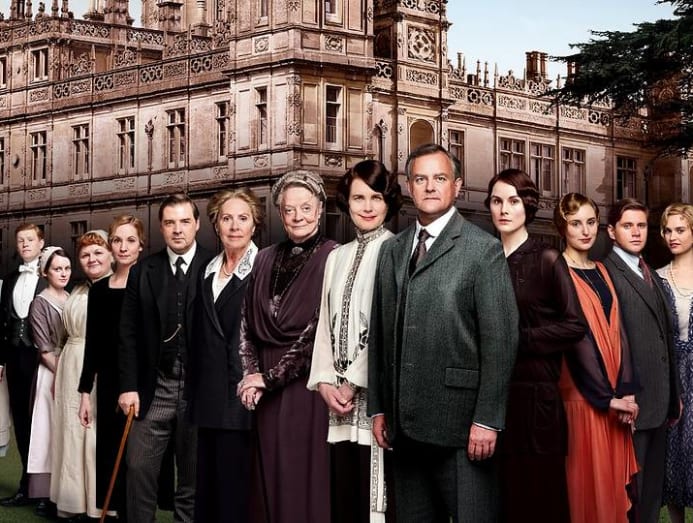
The visual splendour of Regency and Edwardian drama is alluring, as Bridgerton reflects. The crossover of rural aristocracy and urban manner in Georgian England produced the aesthetically extravagant young man monde. When the Duke of Hastings refers in Bridgerton to "the wedlock-minded mothers of the ton", the viewer might call back he means "town" merely he is using the phrase "bon ton", from the French noun for tone – Regency metropolitan society.
Bon ton was "what might be described today equally the 'it' factor: an elusive yet exclusive form of social distinction," wrote Greig, a lecturer at the Academy of York and historical consultant on Bridgerton.
I 18th-century commentator called it "the verbal and invariable pursuit of everything that is fashionable, polite and elegant", and in 1776 The Morning Post published a "Scale of Bon Ton", grading 12 high society women by their beauty, effigy, elegance, wit, sense, grace, expression, sensibility and (lastly) principles. The Duchess of Devonshire came top.
But although aristocrats in lavish clothes appear to be the prototype of social stability, this is deceptive. England was in considerable flux in the belatedly 18th century, with a flood of wealth from the industrial revolution remoulding society. In 1700, as Roy Porter noted in his volume English Society in the 18th Century, information technology remained a "second-rate rustic nation of hamlets and villages" with questionable manners. Equally the Duchess of Northumberland wrote in her diary in 1760: "Went home; voided a big stone. Tired to death . . . A bad supper. Miss Townshend drunk."
Not ABOUT STABILITY BUT FLUIDITY
The underlying entreatment of costume drama is not stability only the reverse: a fluid milieu – or one, every bit with Downton Abbey, on the brink of instability – in which a new elite is emerging through bribery, roguery and dressing up. In Regency England, "there was societal transformation, huge acceleration of the economy and several wars, which are useful for getting rid of characters," said Jerome De Groot, professor at the University of Manchester and author of Remaking History: The Past In Gimmicky Historical Fictions.
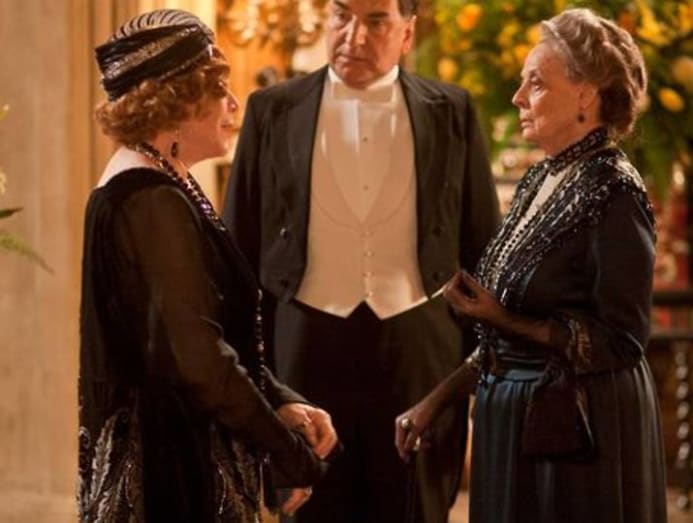
Rather than escapism, we go a mirror on today's world of celebrity, inequality and urban way, where matrons scheme non to get daughters married off to dukes, but to wangle them places at prestigious universities. Eloise Bridgerton, Daphne'southward younger sis and Bridgerton'southward first-wave feminist, might approve. "Having a nice face and pleasant hair is not an accomplishment. Practise you lot know what is an accomplishment? Attending university!" she exclaims.
So might the Empress Catherine, played by Elle Fanning in The Keen, whose consciousness is raised past her husband burning the schoolhouse at which she hoped to teach girls Descartes and Diderot. "Ever since I was a child, I felt like greatness was in shop for me . . . That I was here for a reason, a purpose," she confesses to her servant Marial. "Why did he make you lot a woman, and so?" Marial asks. "For comedy, I estimate," the queen replies.
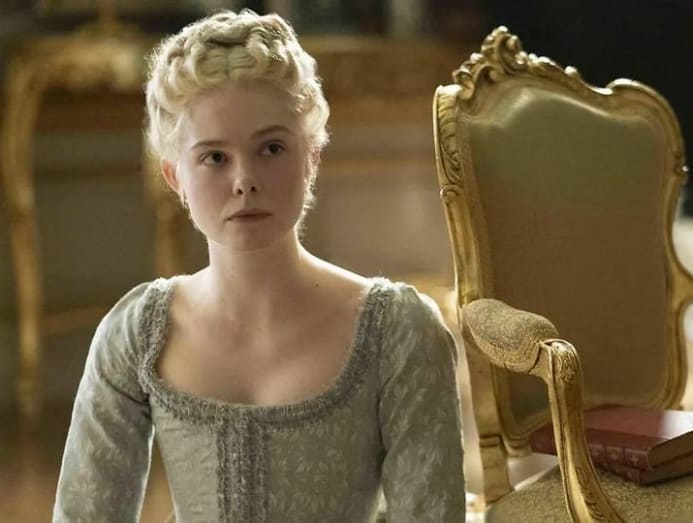
Regency media was not emancipated: a famous painting of Vauxhall Pleasure Gardens in 1784 by Thomas Rowlandson shows the Duchess of Devonshire and her sister Lady Duncannon in a oversupply of the swain monde; they are being spied upon by male newspaper proprietors, with William Jackson of The Morning time Post peering from behind a tree. But Bridgerton and The Great are female-led dramas, in Bridgerton's example told through Lady Whistledown'southward daily gossip sheet.
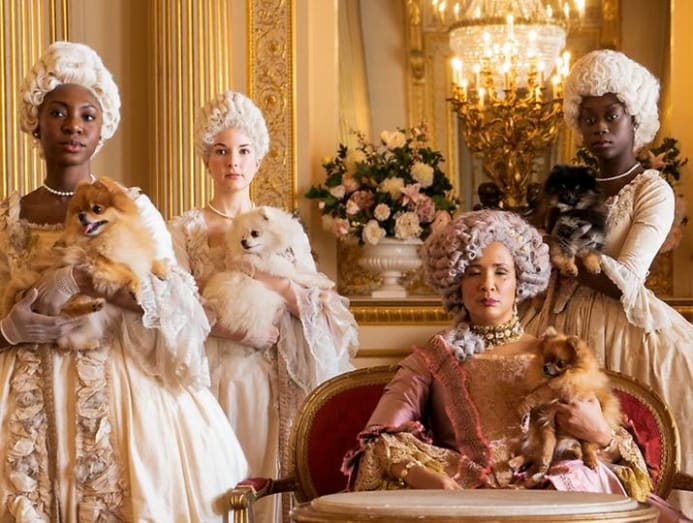
The female gaze is rooted in the original material, both in Jane Austen's novels nearly the emotional turmoil beneath the surface of Regency guild and books such every bit William Makepeace Thackeray's Vanity Off-white (adjusted for Television receiver and broadcast by ITV and Amazon in 2018), whose heroine Becky Sharp turns gender to her advantage. But even the emancipated, literate effigy of Margaret Schlegel in Forster's Howards Terminate finally gains the titular business firm through marriage.
COSTUME DRAMAS AND #METOO
Today's dramas, written in the wake of #MeToo, button liberation farther. As Lady Whistledown observes: "It is but the queen's middle that matters today". The men are nominally in charge but they are incompetent at best – Peter Iii is a libertine idiot who veers betwixt amiability and violence, while Lord Bridgerton blunders in trying to find Daphne a suitable hubby. "What I notice in Bridgerton is the failure of patriarchy. The men are non doing their jobs very well," says Byrne.
Race is less directly addressed in Bridgerton, despite casting black actors in leading roles, including the center-throb Duke of Hastings (Rege-Jean Page). Costume drama is traditionally very white, although Jane Austen included Georgiana Lambe, a "young West Indian of big fortune" in her unfinished novel Sanditon, and the graphic symbol was played by Crystal Clarke in the ITV adaptation. Dev Patel'due south role equally David Copperfield also overturned casting tradition.
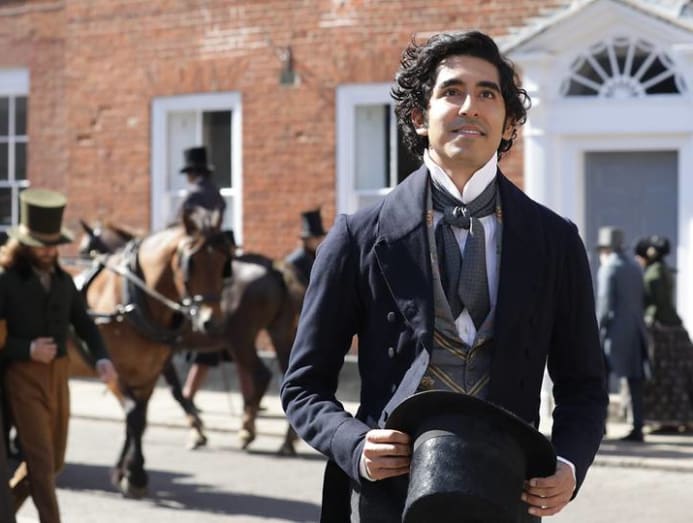
Opening up casting raises questions of accuracy. Queen Charlotte may have been of mixed race – some historians have suggested that she was descended from Alfonso Iii of Portugal and his Moorish concubine Ouruana, but it is non sure (she is played in Bridgerton by the British-Guyanese actress Golda Rosheuvel). "My father said to me 'At that place should non be all of these blackness aristocrats', but then, people in Regency club were not as make clean or tall and they didn't have such proficient teeth. How true is any representation?" says Byrne.
WHAT ABOUT SLAVERY AND BLACK LIFE?
The deeper question is why costume dramas have not done more to portray slavery and black life in Britain in the 18th and early on 19th century. As David Olusoga wrote in Black And British (2016), the slave trade and Caribbean migration brought many to London, more often than not to be servants – Samuel Johnson'south manservant Francis Barber was Jamaican. A few, such as Ignatius Sancho, the abolitionist campaigner, rose in guild (although Sancho was racially driveling on 1 trip to Vauxhall Pleasure Gardens).
In Bridgerton, Lady Danbury comments: "Look at our queen, look at our king . . . We were two separate societies, divided by colour until a male monarch fell in honey with one of usa." Only the story largely skirts effectually the economical realities of the Regency menstruation. "While Bridgerton has cast black characters, the things that are never really addressed are colonialism and slavery," says De Groot. "The slave merchandise had been abolished in 1807 just a lot of coin was withal existence made from it."
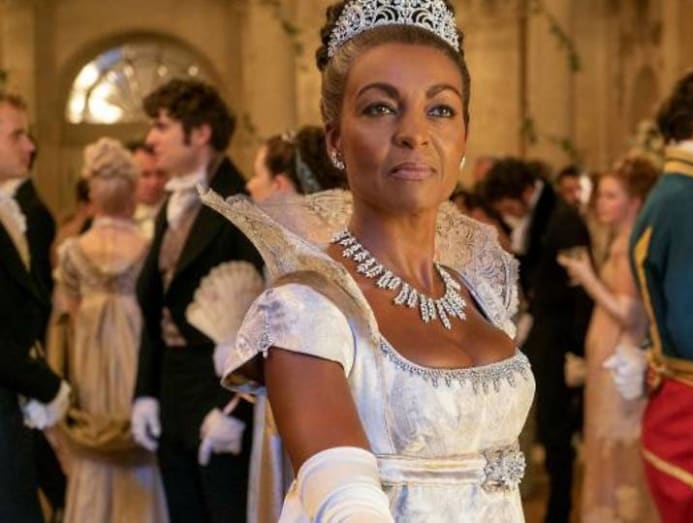
Some recent costume dramas accept focused on slavery, including the BBC's 2022 series The Long Song, based on Andrea Levy's novel set up in Jamaica in 1838, and Amma Asante'due south 2022 film Belle. Just there is a longer tradition of portraying the British empire in India, which Forster wrote virtually in A Passage to India, adapted past David Lean in 1984. Inter-racial romance in Republic of india was dramatised in both Merchant Ivory's Rut And Grit (1983) and the 1984 ITV series The Jewel In The Crown, based on Paul Scott's Raj Quartet novels.
So costume drama still has further to become. The good news is that it has fabricated progress: "We can never go back to the all-white heritage drama at present. The effect of Bridgerton is significant, whether or not information technology is race-bullheaded," De Groot said. The art form has already proved resilient and flexible in adapting to modernity. The corset tin can unlace itself a little further.
By John Gapper © 2022 The Financial Times
Recent Searches
Trending Topics
Source: https://cnalifestyle.channelnewsasia.com/entertainment/bridgerton-netflix-downton-abbey-costume-drama-258406

0 Response to "Clueless, Downton Abbey, Bridgerton: How costume drama is reinventing itself"
Post a Comment